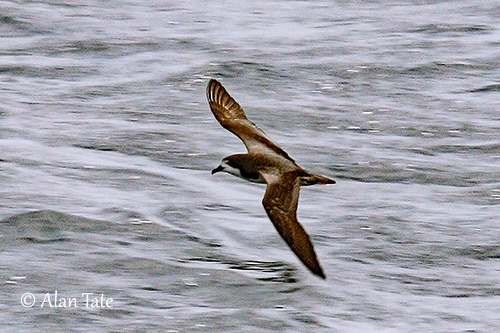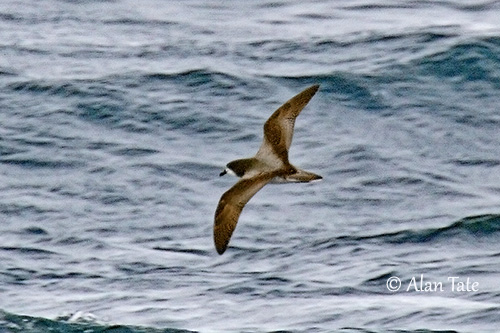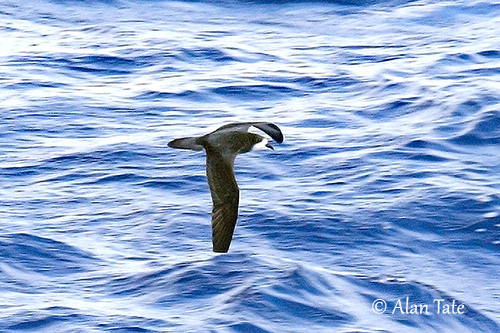
Fr: Pétrel de Gould
Ang: Gould's Petrel
All: Weißflügel-Sturmvogel
Esp: Petrel Aliblanco
Ita: Petrello di Gould
Nd: Goulds Stormvogel
Sd: vitvingad petrell
Photographers:
Alan & Ann Tate
AA Bird Photography
Text by Nicole Bouglouan
Sources:
HANDBOOK OF THE BIRDS OF THE WORLD vol 1 by Josep del Hoyo-Andrew Elliot-Jordi Sargatal - Lynx Edicions - ISBN: 8487334105
Petrels, Albatrosses, and Storm-Petrels of North America: A Photographic Guide De Steve N. G. Howell – Editor: Princeton University Press, 2012 – ISBN: 0691142114, 9780691142111 – 482pages
OISEAUX DE MER – Guide d’identification de Peter Harrison – Editions Broquet (Canada) – ISBN-10 : 2890004090 – ISBN-13 : 978-2890004092
Oceanic Birds of the World: A Photo Guide De Steve N. G. Howell, Kirk Zufelt – Editeur: Princeton University Press, 2019 – ISBN: 0691197016, 9780691197012 – 360 pages
NSW National Parks and Wildlife Service - Gould's petrel conservation project
Office of Environment and Heritage
Gould’s Petrel (Pterodroma leucoptera leucoptera) Recovery Plan
Gould’s Petrel and John Gould Reserve
Australian Geographic - Gould’s Petrels back from the brink
Wikipedia, the free encyclopaedia
Page family Procellariidae
Summary cards
Gould's Petrel
Pterodroma leucoptera
Procellariiformes Order – Procellariidae Family
INTRODUCTION:
The Gould’s Petrel is a small gadfly petrel within the genus Pterodroma. It spends most of its life at sea and comes to land only to breed.
The Gould’s Petrel breeds on several islands off New South Wales, but the New Caledonian populations (formerly a subspecies named P.l. caledonica) breeds in New Caledonia, and a small colony is also found in French Polynesia.
There is no consistent difference between the two races, except the slightly longer wings and tail of the Caledonian birds.
The species is considered today as monospecific.
During the breeding season, the Gould’s Petrel establishes the colonies on steep slopes and gullies of oceanic islands, generally in forested areas. Outside this period, it is marine and pelagic.
Like numerous petrel species, it feed on squid, various cephalopods and small fish caught by surface-seizing and contact-dipping.
The Gould’s Petrel is affected by predation by Black rats taking both eggs and adults. Other introduced species such as pigs, cats and rabbits degrade the habitat and kill the birds. Urbanisation, especially around Noumea, has also a negative impact on the population of this species.
The numbers are declining, owing predation of chicks and adults. The Gould’s Petrel is currently listed as Vulnerable.
This species was described by John Gould in 1844.

DESCRIPTION OF THE BIRD:
Biometrics:
Length: 30 cm
Wingspan: 70-71 cm
Weight: 129-260 g
The Gould’s Petrel is a dark-hooded gadfly petrel. It is rather grey-and-white, with a distinctive and typical dark M pattern on the dark brown-grey upperwing. This pattern extends across the back. The pale grey mantle contrasts with the darker rump. The rounded tail is washed brown.
The underparts are white, except on the underwing showing a broad, black margin and black wingtip. We can see a blackish diagonal bar extending from the leading edge towards the body, but it does not reach it. The tail is narrowly tipped black.
A prominent dark hood on the crown to below the eyes extends to neck and sides of the breast. Forehead, lores, chin and throat are white, like the underparts.
The slender, hooked bill is black. The eyes are dark brown to blackish. Legs and toes are pink, but outer toes and webs are dark.
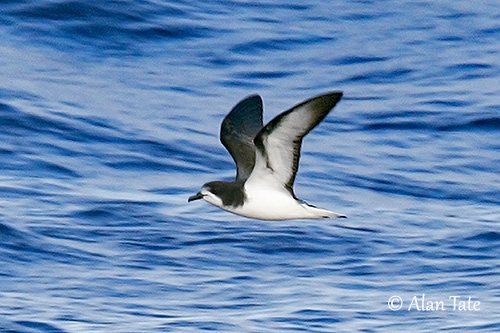
The Gould’s Petrel is polymorphic, with dark morph sooty to dark slate-grey, a white patch on the lower head and some whitish marks on the underwings.
Male and female have similar appearance, but the male is heavier than the female.
The juvenile resembles adults and fledges in adult plumage.
RANGE:
The Gould’s Petrel of Australian population breeds off E Australia, on islands such as Cabbage Tree and three other small islands off Port Stephens including Boondelbah, Broughton and Little Broughton (C New South Wales)
A few pairs are reported to breed on Montague Island and one of the Tollgate Islands, off south-eastern New South Wales.
The former race Caledonica from tropical E Pacific Ocean breeds in New Caledonia and Austral Islands (Raivavae). Three colonies are reported, located between Mts Dzumac and Poya.
The Gould’s Petrel is often seen in the Tasman Sea during the breeding season, and also as far as S as the Antarctic coast.
Outside this period, the species may forage mainly within the Tasman Sea, but both non-breeding range and foraging areas are poorly known.
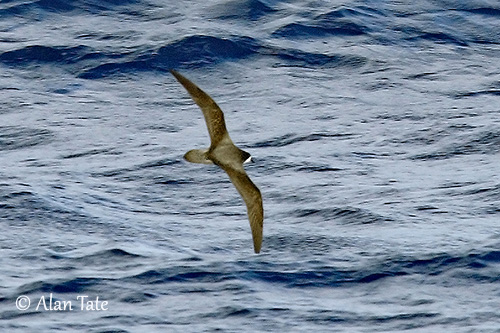
HABITAT:
The Gould’s Petrel breeds colonially on oceanic islands. The colonies are often established on steep forested slopes and also in gullies with a canopy of cabbage tree palms and figs trees.
This vegetation, and especially the fallen palm fronds, provides protection to the nests, both from bad weather and potential avian predators.
This species is found up to 650 metres in New Caledonia.
CALLS AND SONGS: SOUNDS BY XENO-CANTO
Two main vocalizations of the Gould’s Petrel are known and described.
When the bird is flying at night over the colonies, it produces a thin, cicada-like “zit-zit-zit”. But when at nest or on the ground, it gives shrill, squeaky, high-pitched “peep-peep-peeoo”. We can also hear low trembling growls.
BEHAVIOUR IN THE WILD:
The Gould’s Petrel feeds mainly on squid, other cephalopods, especially Ommastrephidae species, and small fish, mainly Myctophidae (Lanternfish). Some Sea skaters (Halobates) are also taken.
It typically feeds by surface-seizing and contact-dipping, picking the prey off the surface while foraging at sea.
It may also forage in association with tuna and dolphins driving the prey to the surface.
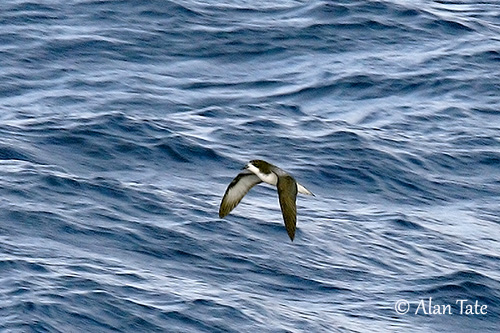
The Gould’s Petrel is a colonial nester. They are nocturnal at the colonies. This species is monogamous with long-term pair bonds.
The petrels of the Australian population do not use burrows as nest-sites. They nest on the ground in rocky crevices, protected by dense vegetation.
However, the petrels of New Caledonia typically nest in burrows or natural cavities on steep vegetated slopes.
A single egg is laid and both adults share the nesting duties.
Following the breeding season, the Gould’s Petrel leaves the oceanic breeding islands and goes back to the sea. But each population follows its own route.
The Australian population migrates to central Pacific, S of Hawaii, whereas the New Caledonian population moves to eastern Pacific, W of Ecuador.
The Gould’s Petrel has long, narrow wings. While flying, it may resemble a small shearwater, but the flight peaks are less fluttering and shallower. It is able to rise high over the sea surface, and it often performs a bat-like, weaving flight.
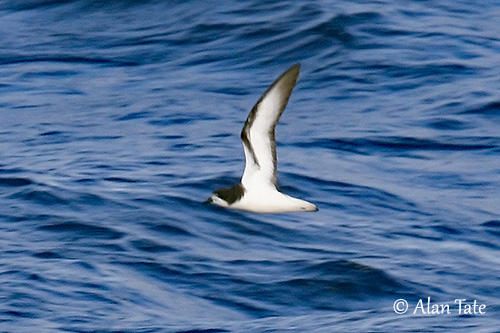
REPRODUCTION OF THIS SPECIES:
The breeding season starts in November/December in Australia. The birds return to the colonies in October, and prior to the egg-laying, they perform a pre-laying exodus of 2-3 weeks.
The nests of the Australian population are on the ground, in rock crevices protected by dense vegetation, often below palms but also among tussocks of Lomandra longifolia (a rhizomatus herb found throughout eastern Australia) on Cabbage Tree. The nest chamber is loosely lined with palm fronds. They breed in colonies with the nests often less than 1 metre apart.
The breeding season in New Caledonia starts about 1 month later than in Australia.
The nests of the New Caledonian population are in burrows or natural cavities, placed on steep forested slopes between 350 and 650 metres above the sea-level. This population breeds in loose colonies of 10-50 pairs.
The female lays a single, white egg. The incubation lasts 49-50 days, shared by both adults in three shifts, the male doing the first shift during 17 days. The chick covered in brown-grey down, stays at nest during 13 weeks and fledges from late March in Australia, or April/early May in New Caledonia.
In some parts of the range, the Peregrine Falcon and the Swamp Harrier are known as potential predators of adults.
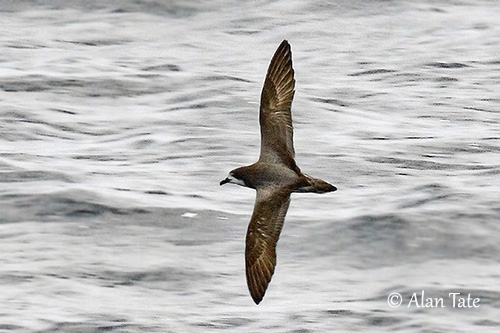
PROTECTION / THREATS / STATUS:
The Gould’s Petrel is affected by invasive species such as Black rats predating eggs and adults.
On Cabbage Tree Island, the introduced rabbits have changed the vegetation, involving the increase of populations of the Pied Currawong, a strong nest predator.
But in New Caledonia, introduced pigs excavate the chicks from the nesting burrows or eat them when they fledge. Cat predation is also an important threat.
Numerous birds are accidentally killed every year around Noumea, due to light attraction and urban development.
Conservation actions are underway. Numerous introduced invasive species have been eradicated. The management has been successful in Australia where the population was estimated at 2,500 individuals and increasing in 2010.
On the other hand, control campaigns are urgently needed in New Caledonia.
The global population is estimated to number 3,000/21,000 individuals, roughly equivalent to 2,000/14,000 mature individuals, depending on the discovery of new colonies in New Caledonia.
But currently, the Gould’s Petrel is listed as Vulnerable.
